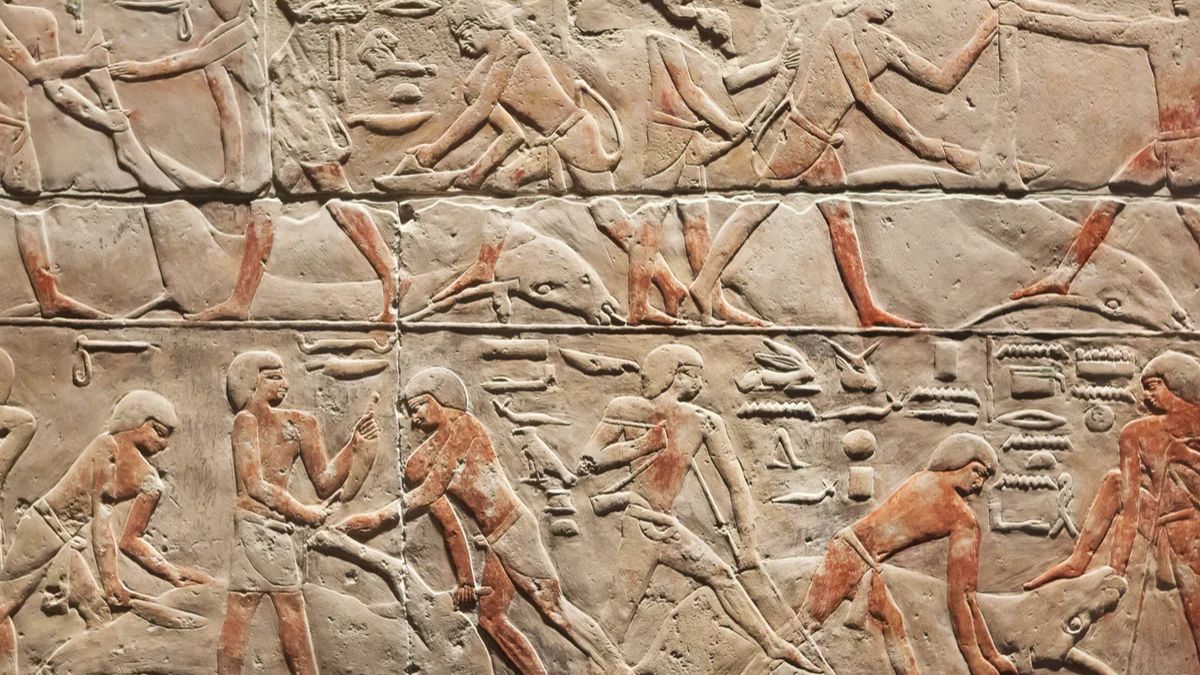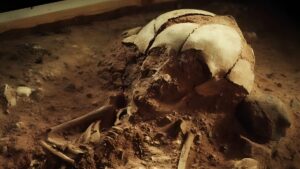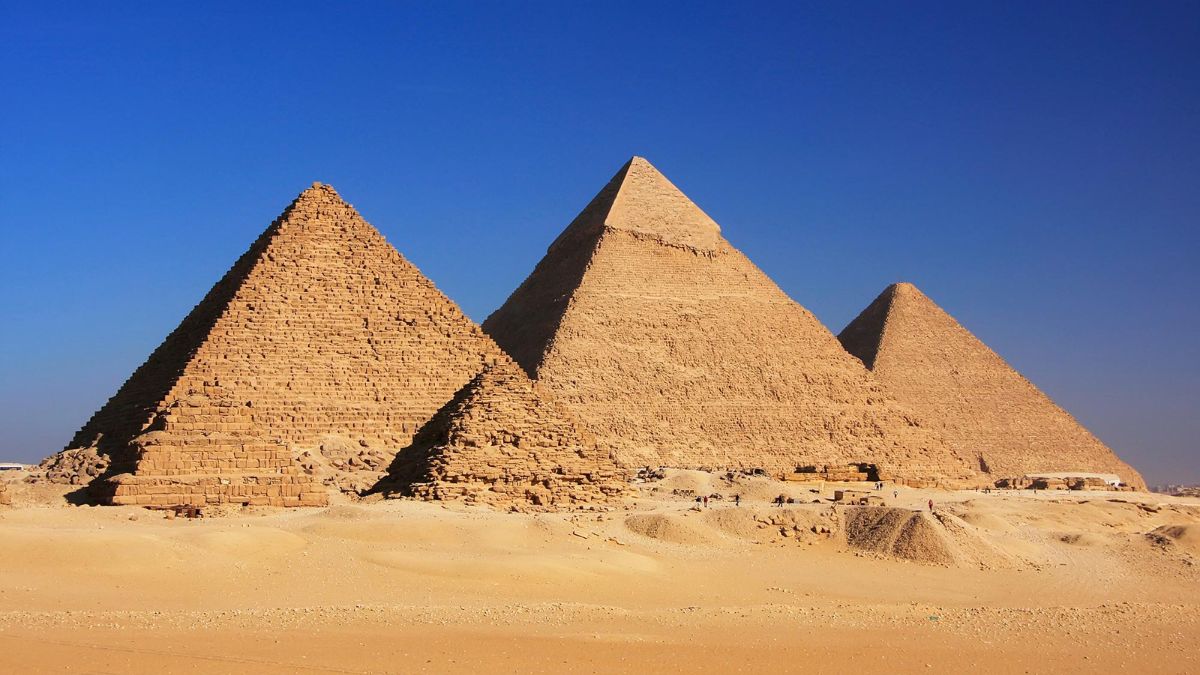Ancient Egypt never stops amazing us, but this new discovery takes things to a whole new level. For the first time ever, scientists have fully sequenced the DNA of a person who lived during the time of the pyramids—around 4,800 years ago! And the results? Let’s just say they flipped the script on everything we thought we knew.
This man wasn’t a pharaoh or a high priest. He was a common worker—likely a potter—yet he was buried in a way that suggests elite status. The question is: why?
Burial
His remains were found in a rock-cut tomb in the ancient city of Nuwayrat, about 265 kilometers south of Cairo. What really stood out? He was buried inside a giant ceramic jar, a method sometimes used for special burials.
He was estimated to be between 44 and 64 years old, which was quite old for the time, especially for someone who clearly did manual labor. His bones tell the story of his life: arthritis, worn teeth, and signs of repetitive movement in the arms and legs. All of this points to a life spent working—most likely spinning clay on a potter’s wheel.
So why the grand burial? Well, researchers believe he was so good at his craft that he may have earned a rare place of honor. Back then, social climbing wasn’t exactly easy, so this was a big deal.
DNA
What makes this find revolutionary is what scientists were able to do with his DNA. Thanks to advanced sequencing technology and work by the Francis Crick Institute in the UK, researchers avoided contamination and retrieved a complete ancient genome—a first for Ancient Egypt.
Here’s what they found:
| DNA Source | Percentage |
|---|---|
| North Africa | 80% |
| Western Asia | 20% |
This means that the man’s roots stretch across both North Africa and Western Asia—areas that include present-day Iraq, Turkey, and Iran. Basically, Ancient Egypt wasn’t isolated—it was a cultural and genetic crossroads, bringing together people, ideas, and technologies from different regions.
Diet
To learn more about his everyday life, scientists looked at his molars. Isotopic analysis showed he grew up in the Nile Valley, eating a typical Egyptian diet of wheat, barley, and meat. This fits perfectly with what we know of Egyptian agriculture during that period.
What makes this even more exciting is when he lived. He was alive during the 29th century BC, just as Egypt was entering its pyramid-building era. So while kings and architects were designing world wonders, this man was shaping clay—completely unaware that, thousands of years later, his body would be at the center of a groundbreaking discovery.
Survival
Here’s the plot twist: his body was first excavated in 1902 and sent to the World Museum in Liverpool. During World War II, a bomb destroyed much of the museum’s human remains. But somehow, his skeleton survived the Blitz.
More than a hundred years after being unearthed, he’s become a biological time capsule. Thanks to modern science and a little luck, we now have an incredibly detailed snapshot of life from nearly five millennia ago.
Meaning
This study is about more than just one person. It’s the first full ancient genome ever sequenced from Egypt and gives scientists a brand-new way to study one of the world’s most iconic civilizations. Up until now, Egyptian archaeology has focused on temples, tombs, and hieroglyphs. But now? DNA is becoming the next frontier.
Imagine what could happen if more individuals like this are discovered and analyzed. We could start to map out population shifts, understand social mobility, and even learn how foreign cultures helped shape Egypt as we know it.
The idea that a humble potter could unlock secrets of an entire civilization is not only poetic—it’s revolutionary. In the world of ancient discoveries, sometimes the most incredible stories come from the most unexpected places.
FAQs
Where was the skeleton found?
In a rock-cut tomb in Nuwayrat, Egypt.
How old was the Egyptian man?
Between 44 and 64 years old.
What was his ancestry?
80% North African, 20% Western Asian.
What job did he likely have?
He was most likely a potter.
Why is this DNA study important?
It’s the first full genome from Ancient Egypt.




















